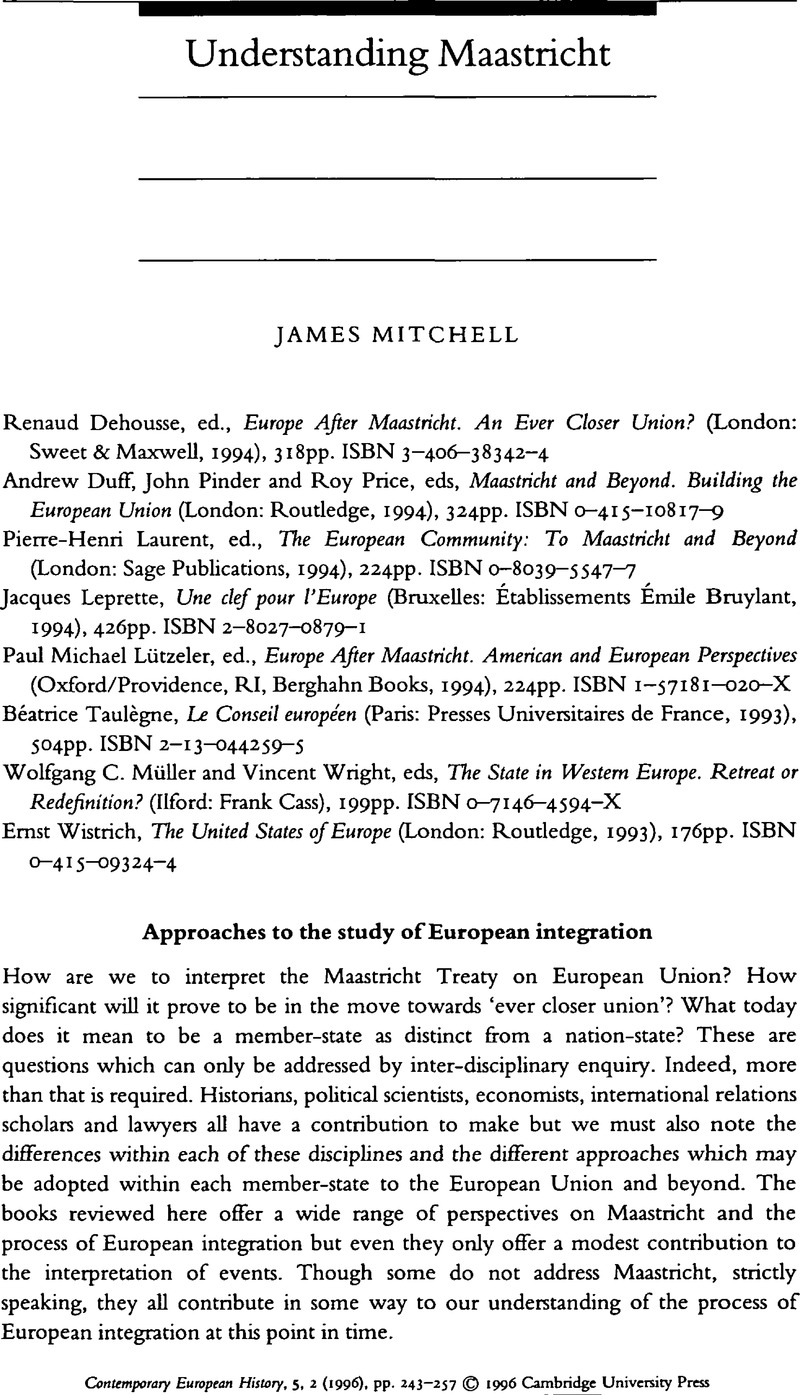Published online by Cambridge University Press: 12 September 2008

1 Haas, , Ernst, B.The Uniting of Europe (Stanford, CA: Stanford University Press, 1958).Google Scholar
2 See my ‘Slogans and Shibboleths: Sovereignty, Subsidiarity and Constitutional Debate’, Scottish Government Yearbook, 1992 (Edinburgh: Edinburgh University Press, 1992), for a discussion of the uses of these terms in contemporary constitutional debate, especially concerning the European Union and Scotland's constitutional status.
3 Monnet, Jean, Memoirs (London: Collins, 1978).Google Scholar
4 Duchêne, François, Jean Monnet: The First Statesman of Interdependence (London: W. W. Norton & Co, 1994).Google Scholar
5 Snyder, Francis, ‘The Effectiveness of European Community Law: Institutions, Processes, Tools and Techniques’, Modem Law Review Vol. 56, 19–54CrossRefGoogle Scholar, quoted in Cram, Laura, ‘Rhetoric, Soft Law and Symbolic Politics in the EU Social Policy Process’, paper presented to the Annual Meeting of the American Political Science Association, Chicago, 31 Aug.-4 Sept. 1995.Google Scholar
6 Aron, Raymond, ‘Is Multinational Citizenship Possible?’, Social Research, Vol. 41, no. 4, 638–56.Google Scholar
7 Marshall, T. H.Citizenship and Social Class (Cambridge: Cambridge University Press, 1950).Google Scholar